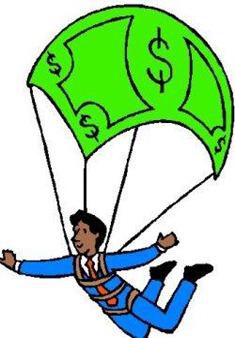 You have probably heard plenty of times that being an entrepreneur is a risky business, and investors talk all the time about reducing the risk. Yet everyone seems to have their own view of key risk drivers for startups, and I’m no exception. I don’t agree, for example, that the first priority is to avoid startups with a high attrition rate, like trendy restaurants and entertainment.
You have probably heard plenty of times that being an entrepreneur is a risky business, and investors talk all the time about reducing the risk. Yet everyone seems to have their own view of key risk drivers for startups, and I’m no exception. I don’t agree, for example, that the first priority is to avoid startups with a high attrition rate, like trendy restaurants and entertainment.
Here is my own priority list of key risk drivers that every entrepreneur and every investor should evaluate and minimize in starting a business:
-
Team experience and depth risk. Here I’m talking about both the experience and track record of the founders in starting a business, as well as their experience and knowledge of the business domain. Like most professionals, when I get a business plan, I flip first to the founders section to see if it is a balanced team who has been there and done that.
-
Market and opportunity risk. There is always less risk with a well-defined problem in a large and growing market. All the people in China is a large and growing market, but all the people with cancer is much more well-defined. It’s hard to make money in a shrinking market, or with a solution that is “nice to have” versus painfully needed.
-
Competitive risk. Think seriously about the number and clout of your competitors. Having none is a red flag (may mean no market), but having more than a couple of large ones may mean this is a crowded space. Even in an open space, you need intellectual property, like patents, to keep potential competitors from overrunning you.
-
Financial risk. Very few businesses can be started without money. You as the founder will be expected to put your own “skin in the game.” The business plan should be realistic about how much cash will be required to break-even, and how big the return will be for investors in the first five-year timeframe.
-
Market entry strategy risk. The selection of an inappropriate pricing, marketing, or distribution strategy is a large potential risk. For example, many new social websites proclaim that they will offer a free service, and live on ad revenues (not likely in the first year without a huge marketing investment).
-
Political and economic risk. Sometimes founders are just in the wrong place at the wrong time. Recessions are a tough time to sell luxury goods. Under-developed countries may have a strong need for your product, but are often unstable and dangerous. Four specifics include tax rates, tariffs, expropriation of assets, and repatriation of profits.
-
Technology risk. New technologies, especially those characterized as “paradigm shifts” or “disruptive” may have long and costly acceptance cycles, or may run into unpredictable performance or manufacturing problems. Medical technologies have costly legal testing requirements, approval processes, and insurance validation.
-
Businesses with high attrition rate risk. Certain business sectors have historical high failure rates and are routinely avoided by investors and many founders. These include food service, retail, consulting, work at home, and telemarketing. On the Internet, I would add new social networking sites, and new matchmaking sites.
-
Operational risk. Some businesses require huge support or administrative infrastructures. For example, vehicle fuel improvements require service stations and maintenance shops nationwide, before they are viable. Even small operations can have breakdowns of specialized equipment and complex support processes.
-
Environmental risk. A nuclear reactor built on an earthquake fault line is a huge risk. Evaluate your business and location for sensitivity to floods, hurricanes, and catastrophic pollution problems, like the oil spill in the Gulf of Mexico.

